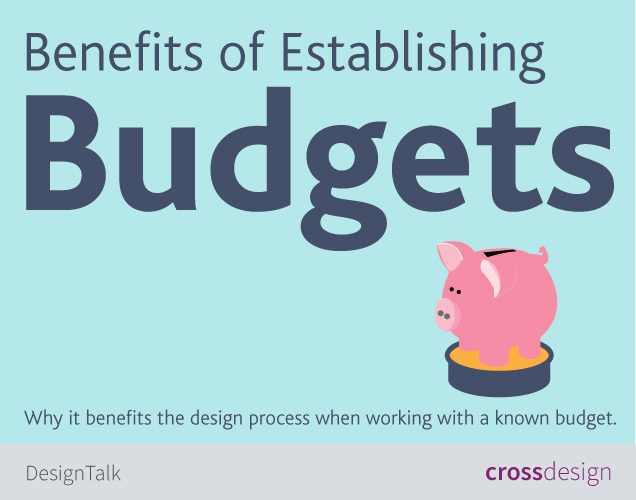
Hold on there… I know you see the word “budgets” in the title here and think, ‘No thanks, budgets are like talking about taxes, a bit boring.’ But keep reading, this short conversation could help you actualize that project you keep on putting on the back burner…
Not everyone knows how to evaluate what your budget should be, or how much something will cost. For this reason, when I first meet with a client on a project, I love hearing their unabridged wish list. Yes, let’s have a conversation about the ultimate possibilities. Yes, let’s shoot for the moon! — Then let’s take a step back and get realistic and integrate the necessary component of your budget into the solution equation. Visiting the land of hopes and dreams is a valuable first step. I am here to help you achieve your dreams. But taking a step back and evaluate what we can realistically achieve within your budget — and eliminating unnecessary bells and whistles — we can engineer a solution that suits your individual company.
A Disclosed Budget Can Benefit Both Parties
If you do know what your budget it, voice it. It’ll save both of us from visiting solutions that you can not afford.
1. A budget puts goals in clear perspective, and I can then advise you what you can get for that amount.
2. A visit to your wish list can assist a conversation on whether you need that much design or not.
3. A budget will help me guide you to the most appropriate solution, and to stay away from items beyond your price range.
4. A budget will help us prioritize the wish list into a marketing plan, and tackle those top desires first, while planning to incorporate secondary desires as the year goes forward and new funding arises.
Budget Options: Finding the Solution to Fit Your Allowance
Going over a wish list with a client often reveals what the true cost that is involved to get the the aspired results. When you’re not willing to give up on your dream solution, or certain components to your dream solution, there are ways to develop a budget to achieve those goals.
We have a few options to put us on the path to finding a budget solution:
1. Prioritize the elements on the wish list, and start eliminating piece by piece until we reach a comfortable budget.
2. Taking on the list of desires in phases, allowing us to achieve our wish list over time.
3. Change the variables. A lower budget doesn’t necessarily mean the work can’t be done. Let’s get creative.
Here are a few examples:
– Change or limit the features on a website, or see if we can achieve results within a five-page website solution instead of a eight-page solution.
– If it is a print project, select a different paper, limit the number of ink colors, or consider digital printing instead of a traditional press.
– Change the photography budget to include stock photography instead of custom photography.
4. Increase the budget to immediately obtain set goals. You may discover that your goals just can’t be met unless you increase your budget. This might mean canceling a secondary project or pulling funds from a secondary project that will change its future parameters.
Don’t count a project out because you think you can’t afford it. Budget restrictions can force inventive solutions — solutions that may be even better than their ‘fancy’ counterparts.
